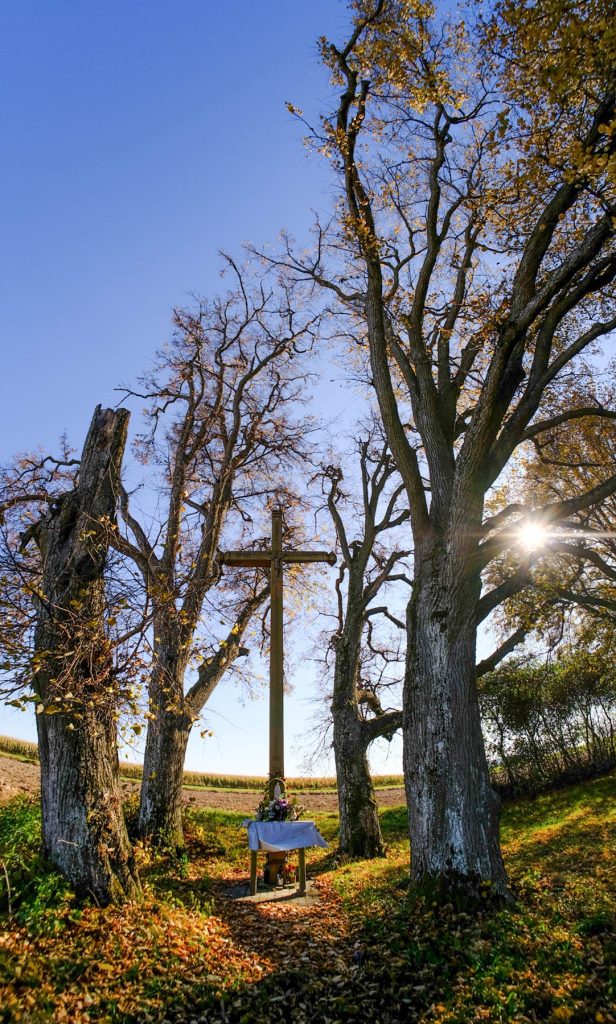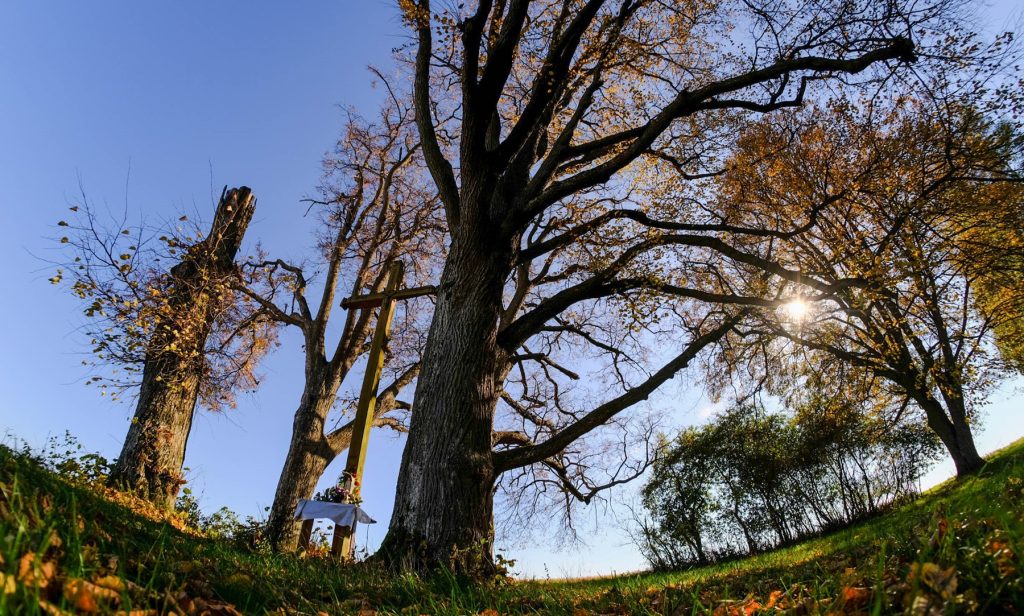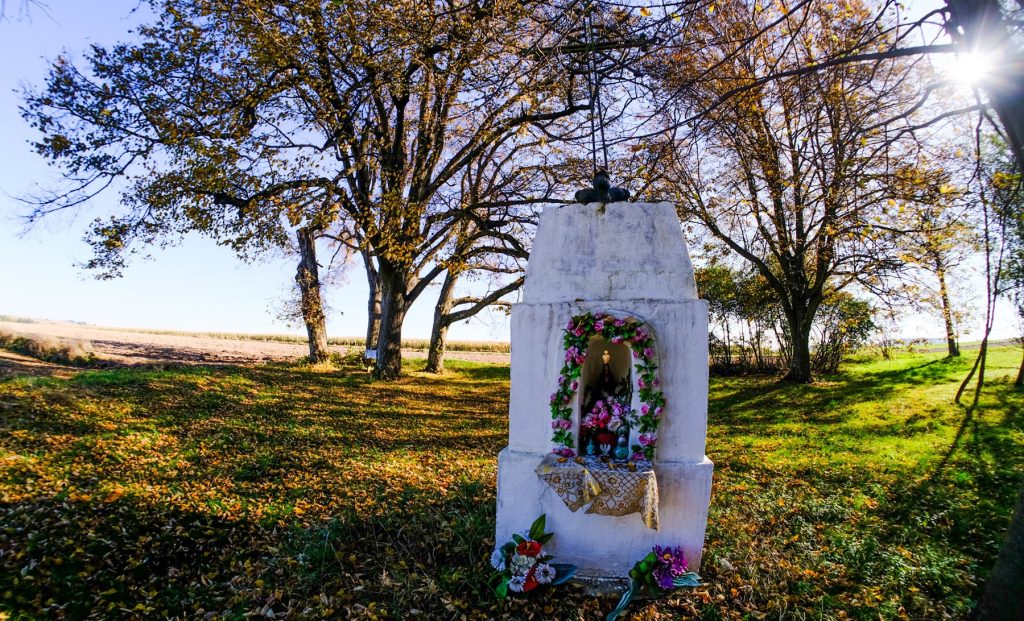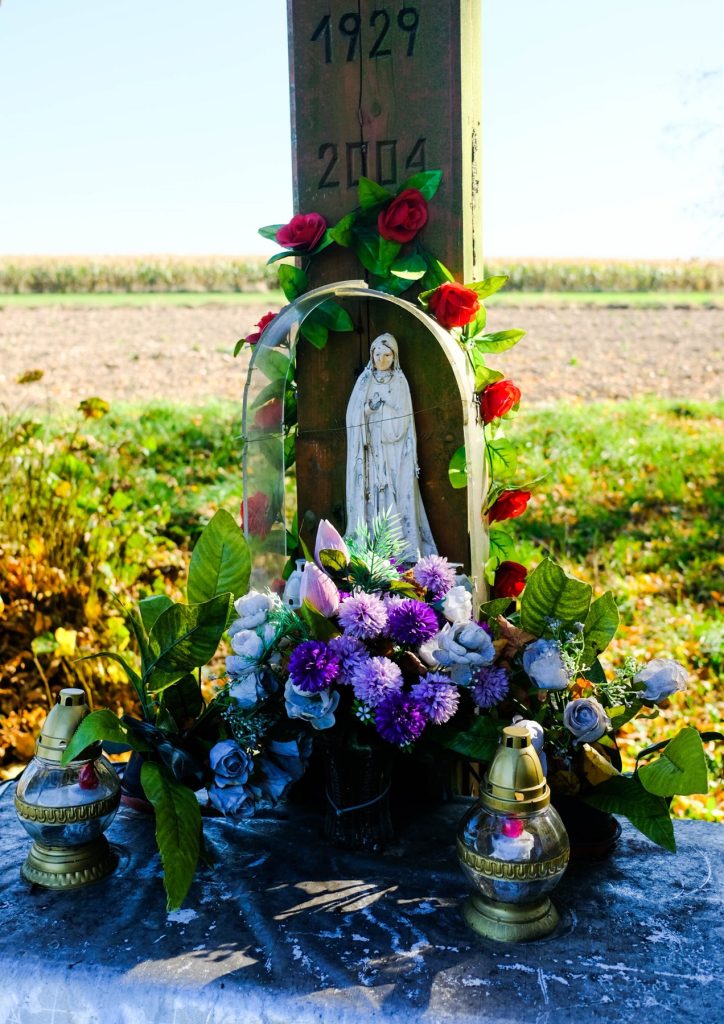JABŁONNA DRUGA, GM. JABŁONNA, POW. LUBELSKI
JABŁONNA DRUGA, GM. JABŁONNA, POW. LUBELSKI
A former place of worship with the local name "Bushes", "God's mercy". It is located on the culmination of a small hill, above the valley of the Czerniejówka stream, on the grounds of the village of Jablonna Druga. In a small grove is located a wooden cross and a brick chapel. As late as in the 2nd decade of the 21st century, a sizable stone lay near the wooden cross. According to local tradition, its surface bore the imprinted footprints of the Lord Jesus, who ascended to heaven from this place or rested while wandering the world. In 2019, the stone was stolen. According to the Geographical Dictionary of the Kingdom of Poland, "God's Mercy" was "considered by the people to be a miraculous place, where for a long time on the Ascension of the Lord companies of several miles gather, pray under the cross and with earth, as if miraculous, wounds and sick parts of the body poultice. For a long time, the owners of Jablonna sought permission from the spiritual authority to erect a chapel "in the bushes," which was not allowed" (Słownik
Geograficzny...I, 489). In turn, according to W. Koźmian's description of 1903, for several hundred years it was supposed to have been a place of pilgrimage for the local population on Ascension Day, however, without the participation of the clergy and landowners who were hostile to the cult. The belief in the healing power of the clay deposited at the site, especially helpful for rheumatism and other incurable diseases, was widespread and strong. On Ascension Day, those suffering from various ailments who came here in large numbers were expected to bury and poultice their ailing body parts with the earth.
An analysis of Antoni Mayer von Heldensfeld's map of 1802-1804 indicates that "God's Mercy" was originally located in the area of a larger forest complex, covering the entire elevation.
In the 19th century, the owners of the Jablonna estate ordered the clearing of the forest and the grove, which met with opposition from the residents of the surrounding villages. At the beginning of the twentieth century, two wooden crosses were to stand in the place next to the stone. Religious practices were accompanied by fairs, during which, according to W. Koźmian, devotional items were traded, among other things (Koźmian 1903, 511).
In the chronicle of the Bychawka parish there is a record stating that on May 17, 1928 a procession of over a thousand believers, organized by the local priest Borlewicz, set out from Bychawka to the miraculous place "in Krzaczki". From 1930 comes the description of a direct participant of the events: "The sight of lying, earth-covered children and the elderly, and their families, feeding these sick and praying over them, takes us involuntarily to some darkness of medieval medical practices.
The departing people break lime branches for the road, which they brew at home for rheumatism patients. All around, numerous market stalls and hustle and bustle as if at a fair. Despite the presence of a priest and the day of a Catholic holiday, the whole thing gives the impression of a pagan charm" (after Januszek 2015, 21). After World War II, the cult of the place enjoyed less and less popularity. In 2020. "Bushes" was entered in the register of historical monuments as a historical place of religious worship and placed under conservation protection.
Sources of information: Geographical Dictionary 1880-1904, I, 489; Koźmian 1903, 510-511; Januszek 2015, 21;
Krzaczki, Record Card of the Monument in the Archives of the Voivodship Office in Lublin dated 15.05.2020; field queries
Geographic coordinates: 51.069018, 22.600826








Forest with a wonder spot on Heldensfeld's map of Western Galicia (1801-1804)